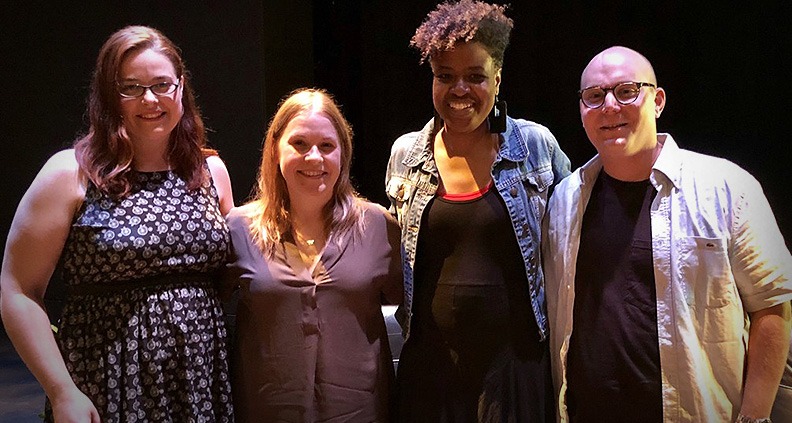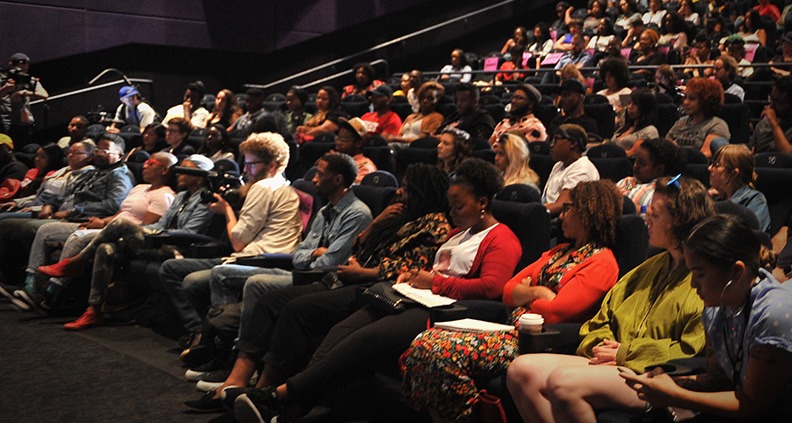Dear Producer: Finding a Good Side-Hustle
NOTE: the following post originally ran on the website Dear Producer and is being shared here courtesy of its author, Film Independent Fellow and Creative Advisor Rebecca Green. Excerpts from Dear Producer appear on our blog monthly.
***
I know. I cringe just as much as you do reading the phrase side-hustle.
The phrase may feel like it was invented by Millennials, but “side-hustle” has actually been in our vocabulary for almost 70 years.
First appearing in print in the 1920s, the phrase was used to refer to a swindle. Over the following decades, it began being used in a non-judgmental way, simply referring to an attempt to make money. It wasn’t until the 1950s that the phrase began to be used to describe a legitimate job. Now, “side-hustle” is defined as “work performed for income supplementary to one’s primary job.”
Here’s what I call it: a necessary evil. For many producers, this is the reality.
It’s how we pay the bills while developing projects on spec and how we supplement low-to-nonexistent producing fees. For some of us, hustling on the side means creating schedules and budgets for films that will never get made. For others, the side-hustle is line producing and production management, which drains all of our energy. Or it’s producing commercials, where the budget for one day of shooting is larger than the entire budget on your last feature.

But don’t let your side hustle bring you down. According to the personal-finance company Bankrate, an estimated 44 million people in the U.S. have a side-hustle. In the Inc.com piece The Ultimate Side-Hustle How-to Guide, Jeff Haden—author of The Motivation Myth: How High Achievers Really Set Themselves Up to Win—lays out his 10 commandments for side-hustle success. The tip I feel is most notable for producers is this:
#10 See your side-hustle as “me time.” When you choose your side-hustle, pick something you want to do. Pick something you want to achieve. Pick something you want to be and actively work toward it.
Most of the time your side-hustle feels like a full-time job, making it all the more important to pick work that challenges and inspires you.
Like the majority of Dear Producer readers, I’m not exempt from needing a side-hustle to supplement my producing ambitions. Despite perception, my film It Follows did not eliminate my struggle for financial stability. Hustling on the side, I’ve had to do everything from budget breakdowns, to reviewing applications and writing coverage for filmmaker lab programs, to consulting on other people’s films—when all I really wanted to be doing was working on my own.

My most recent side-hustle was working as the Retrospective Programmer for the 2018 LA Film Festival, which ran September 20-28. As part of that hustle, I curated six films that screened throughout the nine days of the Festival.
While that sounds like a lot of fun (right?), it was actually a bit more challenging than I anticipated. I was excited when offered the position because curation is essential to becoming a successful producer. Given the amount of work that goes into making a story come to life, we have to be discriminatory in what we dedicate ourselves to, meaning we have to have strong curatorial muscles. We need to understand what audiences need and want to see—and we have a responsibility to push that sometimes.
The first challenge was finding some kind of point of view. What, given that this was Los Angeles, land of Hollywood and broken dreams, would audiences respond to? What stories are people in need of right now? What are films that inspire and move us? What are the films that are unexpected and exciting enough to get audiences to turn off Netflix and head to the theater? And as part of a retrospective, what films are old enough to be slightly off the radar, but still relevant to today’s audience? Perhaps they even reflect a different reality or show how far/not far we have come since they first ran like, for example, Gregory Nava’s El Norte, a film from 1983 about the plight of two undocumented siblings.
The next challenge came in the form of working to secure licenses to screen the films, which lead me to learning a lot about music rights and sing-a-longs that I otherwise did not need to know. Producers are always learning about things we otherwise do not need to know. For example, that time during production on It Follows when director David Robert Mitchell wanted an actual giant to portray one of the “its” and I found myself Googling “tallest men in the US.” Turns out one of them lived in Michigan, right around the block from where we were shooting. His name is Mike Lanier, and he’s a 7’7″ former NBA prospect who lives outside Detroit and designs engines for GM. But I digress…
Eventually, I landed on a variety of films that challenged me to think deeply about the needs and wants of audiences and also allowed me to revisit some of my favorite films. In the end, challenges aside, I was able to dig deep into those questions we face when curating stories and came up with something for everyone to enjoy.
As a side-hustle, retrospective programming was a bit different than the usual things I do to continue to feed my producing dreams (and my cat). But heeding the advice of Jeff Haden, I embraced the exercise as my own. At times it felt like making a mixtape: classic songs I love (The Wedding Banquet, Mystic Pizza), nostalgic pop hits (The Dark Crystal, Half Baked), sing-at-the-top-of your-lung anthems (The Little Mermaid) and serious, heart-wrenchers (El Norte).
When it comes to side-hustle, it would be kind of great if we didn’t have to do them. But since this is the world in which we live, we do what we have to. In this case, I felt all the stronger for it.

To read this conversation as it originally appeared, click here and click here for more Dear Producer. To read a recap of the Rebecca Green moderated panel The Future of Producing at the 2018 LA Film Festival, click here.
Learn how to become a Member of Film Independent by visiting our website. Be sure to follow us on Twitter, Facebook and Instagram and don’t forget to subscribe to Film Independent’s YouTube channel.
